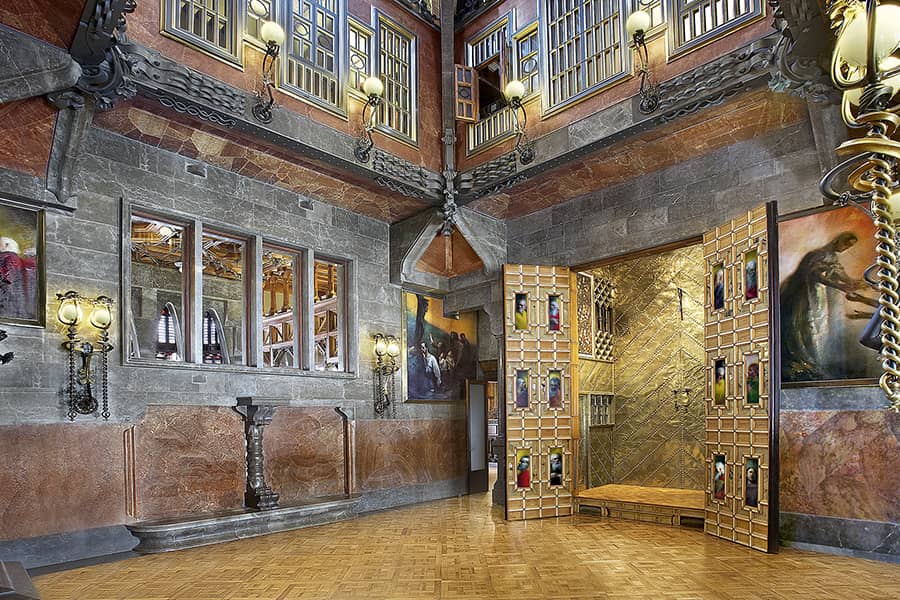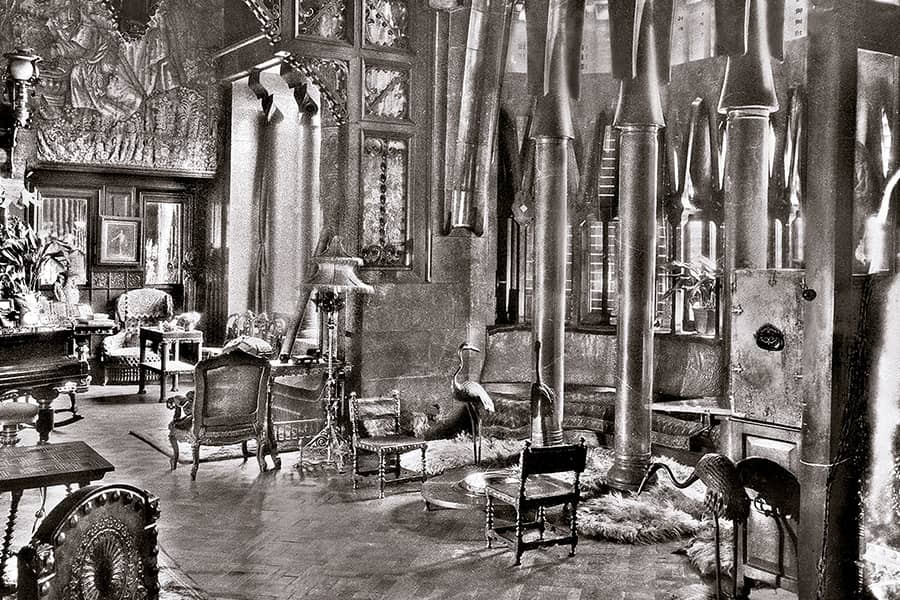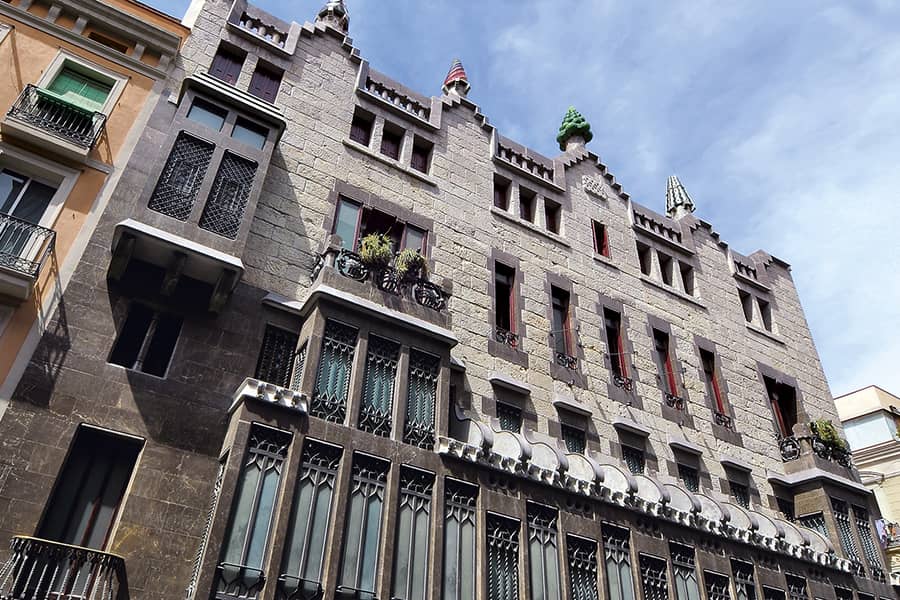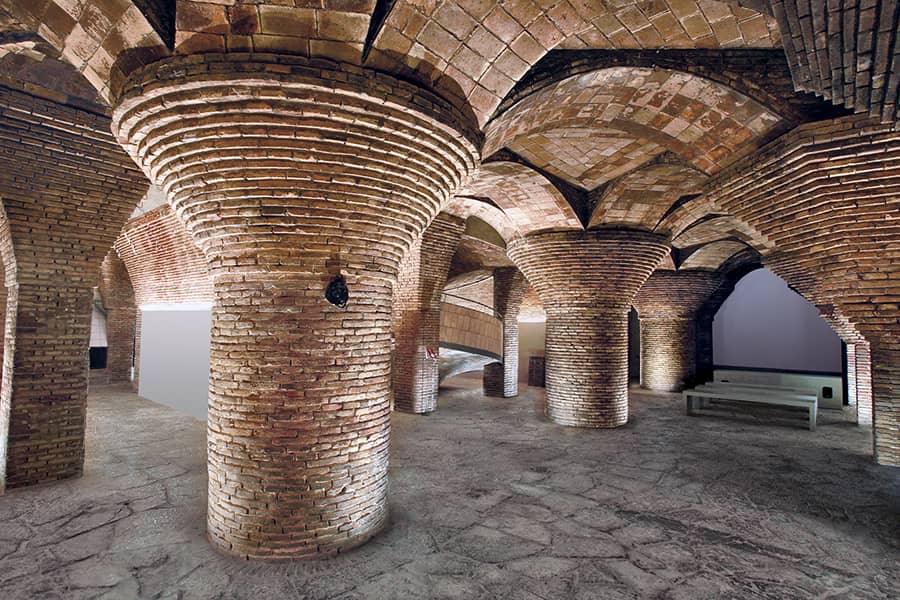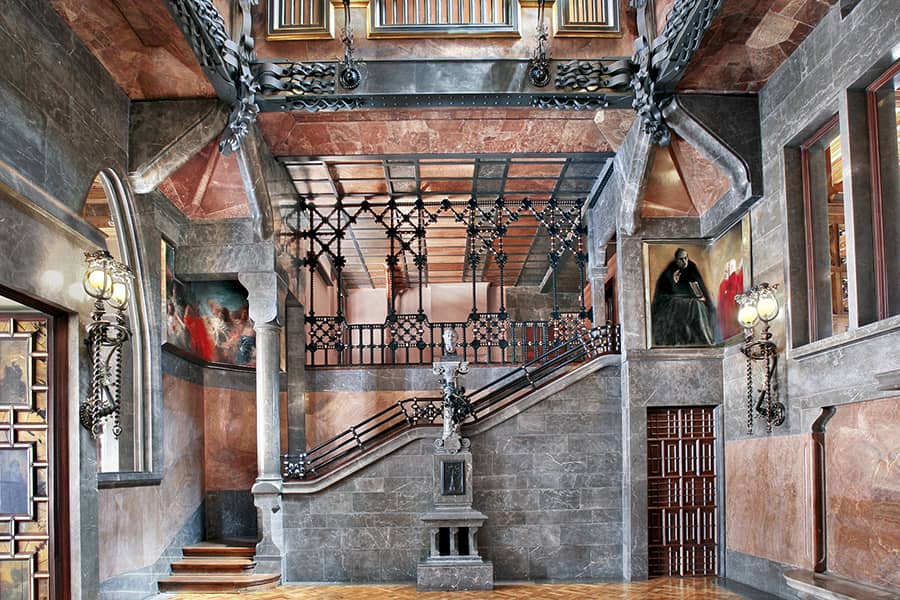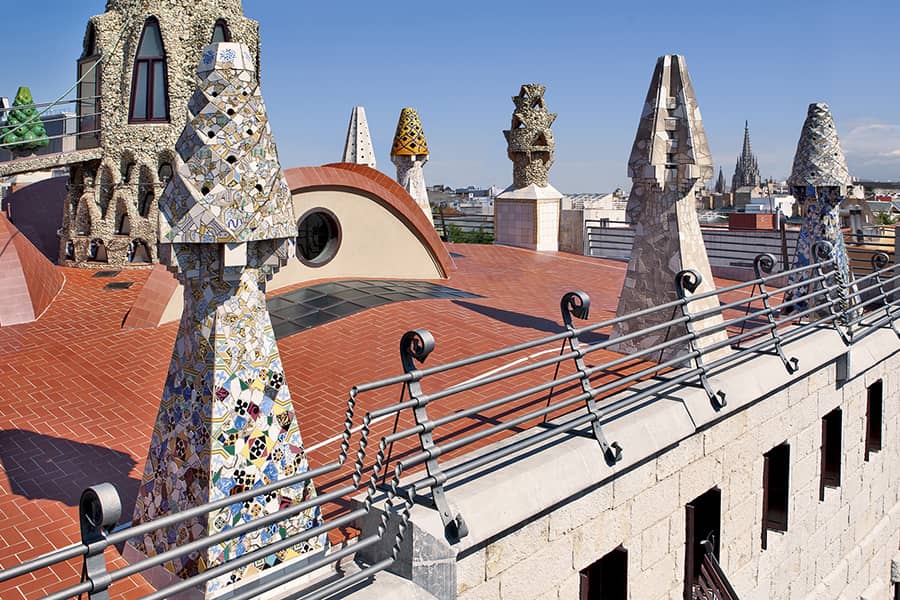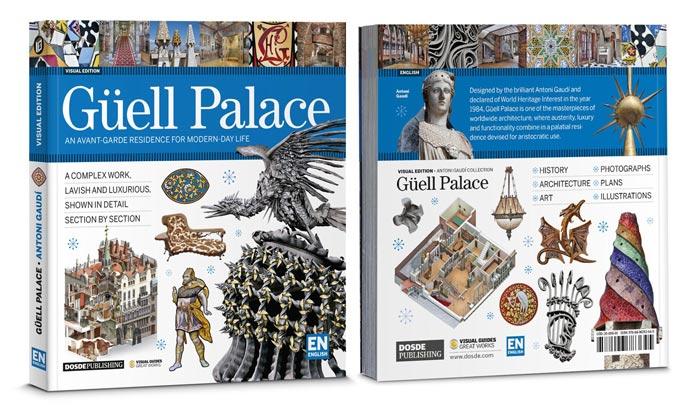What is Palau Güell?
Located in the centre of Barcelona, on the street Nou de la Rambla, Palau Güell (Güell Palace) is a palace designed by Antoni Gaudí commissioned by industrialist Eusebi Güell, the architect’s main patron. The building, in which Gaudí masterly combined ornamental variety with maximum functionalism, it was constructed between 1885 and 1890, coinciding with the hatching of Modernisme, and it includes the work of some of the best craftsmen of the period.
The importance of Palau Güell is reflected by its inclusion in 1986 on the list of Unesco’s World Heritage Sites.
The origins of Palau Güell
In 1885, Barcelona was caught up in a frenzy of activity in preparation for the Universal Exhibition of 1888, the event that culminated the city’s expansion after the demolishment of its walls. Within this context, industrialist Eusebi Güell, impressed by Gaudí’s work on his summer residence, commissioned the architect, aged 34, with the project of an urban palace on a street adjacent to the Rambla, where the Güell family were residing.
At a time when the majority of upper-class families were moving to the brand-new Eixample in search of space, light and modernity, which Barcelona’s many old, narrow streets couldn’t provide, Güell opted instead to build his home in the run down district of Raval because the site he had acquired allowed him to connect the new palace to the family mansion on the Rambla.
In this setting, Gaudí planned Palau Güell, a building that was deliberately introspective (plain on the outside and sumptuous on the inside), whose rooms were both isolated from the street and the block courtyard, organised around a central salon, a large vertical room that started from the main floor and which pierced all the floors of the building until culminating in a parabolic dome.
Despite the enormous investment involved in carrying out this work, Güell only resided twenty years in the palace. In 1910, months after the violent episodes of Setmana Tràgica (Tragic Week), he moved to Park Güell, a peaceful area that was only a few kilometres away from the city centre. On his death Palau Güell was inherited by his children and in 1945 it was sold to the Diputació of Barcelona, on the condition that it would never be demolished nor altered and would remain one of the best examples of architectonic heritage that the works of Gaudí suppose.
The Palau Güell façade
Güell suggested to Gaudí that the exterior of Güell Palace be a contrast of sobriety and rigour to the multicoloured atmosphere on Nou de la Rambla street, famous for its nightclubs. The architect planned the façade of Palau Güell with regular masonry, using white limestone from the quarry that Güell owned in Garraf. Only the gallery on the main floor breaks the austerity of the arrangement, strictly based on straight lines except for the two catenary arches that outline the entrance and exit doors of the building.
On the ornamental plane sobriety reigns. The only sculptures to be seen are the lilies that decorate the gallery. The wrought iron work gives a respite from the severity of the façade with a flag based on smooth plate and metallic mesh, crowned by an eagle with outstretched wings, along with the grilles of the windows and doors, full of organic forms inspired by nature.
The palace basement
Completely built in brickwork, except the floor, the basement in Palau Güell was actually used as stables for the horses, a secondary area which Gaudí tackled with his usual meticulousness and enthusiasm, designing a large single space supported by a pillar-forest of circular and square section which could be accessed by two ramps –one for people and one for horses– and whose amplitude facilitated both the movement of the animals and provided the necessary ventilation and lighting, guaranteed thanks to the open hollows on the floor above and the presence of a patio well in the rear, next to the small coachman’s room.
The ground floor of Palau Güell
On the ground floor of Palau Güell a luxurious reception area of monumental character was devised, rather like a large vestibule, around which the traffic was organized as well as the entranceways (for pedestrians and for carriages) and the other rooms on the floor. For a better organization of the area, Gaudí divided the vestibule into two parts (each one on either side of the staircase that climbs up to the other floors in the residence) in order to organize the coming and going of the carriages as there wasn’t much space for the vehicles to manoeuvre.
However, practically all the ground floor of the palace was used for service purposes (the warehouse, the coachhouse and the caretaker’s residence) which were distributed by the architect in such a discreet way that they would be hidden away when distinguished guests were invited to Palau Güell.
The main floor
In Roman and Muslim architecture, the different rooms in the palaces and homes of wealthy families were organized around a central courtyard, called the atrium. On the main floor of the urban palace that Gaudí designed for Güell, the architect was inspired by this idea and substituted the atrium for a room that was three floors high, used for social functions, concerts and religious ceremonies.
Around this space, converted into the centre of the palace’s public life, Gaudí distributed the rest of the rooms on this floor according to the type of social gathering that they had to host, with the front rooms (those overlooking the main façade) reserved for visits and the rear ones (overlooking the block courtyard) for private, informal reunions.
The second floor
The Catalan architect designed the bedrooms with great rationality, with a spacious bedchamber for the Güell couple alongside the bright and quiet rear façade and the rest of the bedrooms attached to the main façade. The number of rooms was insufficient for the large Güell family, but Gaudí knew that not all the family would move into the palace and that the elder children would do so only on a temporary basis, which was why he opted to give priority to the spaciousness of the rooms and to reserve an area for the parlour, where all the family would be able to gather.
As for the decoration, Antoni Gaudí held back on too much detail as he wanted the residents to be able to decorate their rooms according to their own taste. This ornamental sobriety is even more apparent in the attic, the floor to be used by the Güell’s large domestic service.
The roof terrace of Palau Güell
As well as the central room and the basement, the terrace is one of Palau Güell’s most evocative spaces. Twenty chimneys built with brickwork and covered with trencadís ceramic work, glass, marble, porcelain or sandstone, and four skylights in a catenary arch shape go around the narrow lantern dome that rises 15 metres above roof level (with a radiant sun, a bat-weather vane and a Greek cross) in homage to the tangled personality of the roof terraces of Barcelona that would culminate two decades later with the creation of the oneiric terrace of La Pedrera.
A luxury book that unveils the Palau Güell in detail
Palau Güell is one of the great masterpieces designed by Gaudí in Barcelona. The architect carried out a daring and imaginative proposal with this avant-garde residence devised for aristocratic use.
This book on Palau Güell includes more than 250 photographs and 3D illustrations. It delving into each one of the nooks and crannies that make up Güell Palace. The reader will be able to discover the greatness of this project. Published by Dosde, it is the most complete book on this work in Barcelona by Gaudí.

